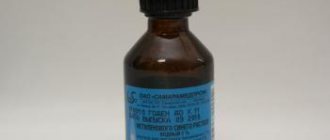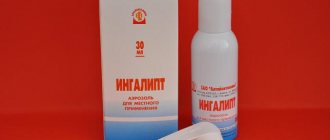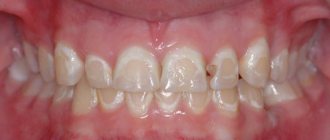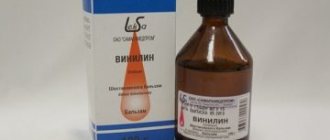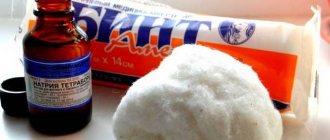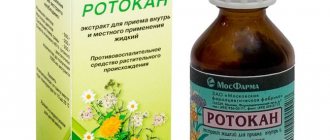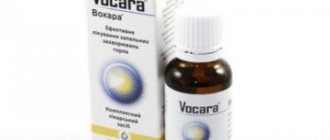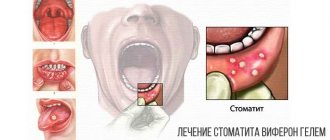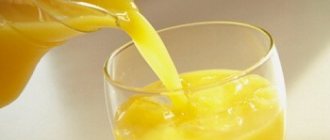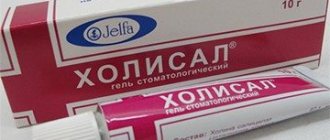The inflammatory process on the mucous membrane in the oral cavity can be caused by stomatitis. This disease manifests itself as rashes in the oral cavity in the form of ulcers, blisters, erosions, which interfere with eating, talking, and force you to move your lips and tongue less. The person experiences significant discomfort.
One of the effective means of treating the disease is blueing. It is even prescribed to children for stomatitis. This article will talk about what this drug is and how to use it.
Composition and release form of the drug – blue or methylene blue solution
Methylene blue solution (otherwise called blue) is an antiseptic solution, the main active ingredient of which is methylthioninium chloride, the auxiliary component of the presented product is distilled water.
It is available in 25 mg bottles. The solution is a homogeneous blue liquid without precipitation. Blue is also available for sale in powder form for homemade solution, as well as a solution of blue in alcohol. The drug is available without a prescription.
Prescription pharmacies prepare a solution of methylene blue. The drug is very cheap, so you don’t have to look for promotions and sales. The price of one such ready-made bottle with a 1% aqueous solution in Moscow and St. Petersburg is 28-60 rubles for a volume of 25 ml. You can even buy blue powder. Some online stores sell this substance.
- Online pharmacies in UkraineUkraine
Pharmacy24
- Methylene blue aqueous-alcoholic solution 1% 10 ml PAT Monfarm, Ukraine
- Methylene blue aqueous-alcoholic solution 1% 20ml PAT Monfarm, Ukraine
PaniPharmacy
- METHYLENE BLUE liquid Methylene blue solution for external use, alcohol. 1% 10ml Ukraine, Monfarm JSC
- METHYLENE BLUE liquid Methylene blue solution for external use, alcohol. 1% 20ml Ukraine, Monfarm JSC
show more
Before using methylene blue to eliminate ailments and prevent it, it is important to familiarize yourself with the disadvantages of using the drug in an aquarium. They are expressed in the following points:
- Deterioration of the condition and development of plant flora.
- Painting the walls of the tank in blue shades if the container is made of plastic.
- Coloring the soil if the substrate is light in color.
- Painting decorative elements from a light shade to blue.
To avoid such phenomena, aquarists have come up with an excellent solution: they use methylene blue for baths without pouring the solution into a common tank. To cure a sick fish, it is placed in a prepared container with blue conditioner. If the treatment must be carried out in a general aquarium, then light-colored decorations should first be removed from the tank. After completing the course, clean the walls of the aquarium.
Description of the drug
The composition of an aqueous solution of methylene blue includes:
- The active ingredient is methylthioninium chloride;
- As an additional substance – distilled water.
To treat inflammation of the oral mucosa, it is recommended to use a ready-made 1% aqueous solution, which can be purchased in 25 mg bottles.
The antiseptic aqueous solution is bright blue in color and has a coloring effect. Therefore, it is recommended to carry out therapeutic manipulations with rubber gloves. In addition, you should be prepared for the fact that the treated areas, especially on the lips, do not look very aesthetically pleasing.
The drug must be stored in a dark place out of reach of children.
According to the information contained in the instructions for this drug, blue is not recommended for use:
- In case of individual sensitivity to the constituent components of the drug;
- For the treatment of stomatitis in children under one year of age;
- For the treatment of stomatitis in pregnant women and during breastfeeding.
It has been noted that the risk of side effects increases significantly when cleaning large areas of damaged areas with blue. In addition, you should be aware that when using the drug, disorders of the digestive tract may occur.
The instructions also contain a warning about the possible negative effects of the drug on the genitourinary system. In case of drug overdose, standard symptomatic therapy is recommended.
Both intravenously and externally
The properties of methylene blue allow it to be used in various fields of medicine externally and intravenously. It is a crystalline powder from which an alcohol or aqueous solution can be prepared.
Medical blue is recommended for use as a local remedy in the following cases:
- for various damage to the skin - externally by lubricating the areas with an alcohol solution;
- as an antiseptic for washing infected cavities;
- for inflammation of the mucous membranes or skin;
- Blue is used for genitourinary diseases directly for washing the urethra.
Intravenous medical blue is prescribed:
- for diagnosing or treating renal pathologies;
- for poisoning with hydrogen sulfide, carbon monoxide or cyanide compounds, blue is used as an antidote;
- The drug is prescribed orally for the treatment of cystitis or urethritis;
- injections of medical blue in combination with novocaine are given intramuscularly for chronic dermatosis.
When administered orally, medical blue is excreted from the body along with urine, turning it bright blue. This way you can assess the excretory capacity of the kidneys and diagnose possible pathologies.
Treatment of stomatitis with bluing
Blue can be used to treat stomatitis in both adults and children. The methods of its use depend entirely on the severity of the disease and its clinical manifestations. In acute and chronic stomatitis, blue is used to treat the entire mucous membrane of the oral cavity. To do this, use a cotton-gauze disk previously soaked in the solution.
- Oblepikhov;
- Shipovnikov;
- Flax;
- Persikov.
When treating stomatitis with bluing, you should know that treatment of the affected areas should be carried out daily, and:
- In adults, it is allowed to clean ulcers up to 10 times a day;
- In older children, treatment of the affected areas is performed no more than 4 times a day, and in children under 6 years old - no more than 2 times a day.
It is also important to know that:
- Treatment of acute stomatitis with bluing lasts, in most cases, a week. In this case, an aqueous solution of methylene blue is used until the ulcerative defects on the oral mucosa are completely eliminated.
- The chronic form of stomatitis is treated for quite a long time, within 2-3 weeks. Therefore, complete treatment of the oral mucosa with bluing is performed only at the initial stage, and later, in order to prevent irritation, it is necessary to switch to spot treatment of individual ulcers.
Blue was previously used very often in the treatment of stomatitis. It is safe to say that this is a product that has been proven over the years. But today, despite the minimum of contraindications and the good effectiveness of the drug, preference in the treatment of inflammation of the oral mucosa is often given to other antiseptic drugs.
This is due to the fact that currently there are a number of faster-acting drugs to eliminate the unpleasant and painful clinical manifestations of stomatitis. But at the same time, many doctors admit that in some cases, treatment of bluing disease turns out to be more effective.
We suggest you read: How to treat stomatitis in a pregnant woman’s mouth
Causes
If someone close to you has this disease, do not be afraid. This disease is not transmitted and is not contagious. The causes of this disease include:
- poor nutrition, insufficient consumption of healthy and nutritious foods and, as a result, lack of vitamins in the body;
- vitamin deficiency, most often the result of long-term poor-quality nutrition, when the body does not receive all the micro- and macroelements it needs;
- smoking;
- anemia, characterized by a sharp decrease in hemoglobin in a person’s blood, as a result of which a weakened body’s immunity decreases and various bacterial infections become established;
- various pathogenic microorganisms, which are primarily causative agents of infectious diseases. Also, the causes of the disease include factors such as dehydration resulting from prolonged vomiting or diarrhea or poorly installed dentures.
We suggest that you familiarize yourself with Dental treatment under anesthesia in children
The doctor prescribes the necessary course of treatment after examining the oral cavity and determining the severity of the disease. Depending on the extent of the disease, an antipyretic, antiviral or antimicrobial agent may be prescribed. As a rule, if this is not a very advanced or severe form, then stomatitis without treatment can go away within a week.
In ancient times, a drug such as blue was especially popular for the treatment of stomatitis. Not to be confused with bluing for household purposes. Its use for quite a long time is very good; many people still keep this remedy in their home medicine cabinets.
Properties and use for medical purposes
In the middle of the 20th century, a couple of mass experiments began on the territory of the Russian Federation. Children in the age range of 1.5 – 10 years were selected as subjects. A total of 86 applicants were selected. The group was selected so that different forms of the disease were present. Thus, 86 people, 56 had clear signs of aphthae, in 17 cases stomatitis manifested itself as an allergic response to a drug, 13 suffered from ulcerative rashes. All findings were verified by high-quality medical examination, so the likelihood of error was minimal.
During the experiment using blue, the following results were obtained:
- Within three days, the children's temperature began to drop;
- After a week, the child’s body began to actively fight and the stage of recovery began.
Considering these data, we can conclude that blue is an effective remedy for the treatment of stomatitis in children, with minimal or complete absence of side effects and a fairly good result.
This drug belongs to the group of antiseptics prescribed for external use (the effect is similar to Miramistin or Chlorhexidine for stomatitis). Its active substance binds bacterial cells and stops the development of pathogenic organisms. Additionally, this product creates a protective film on the surface of the mucosa, which promotes accelerated tissue regeneration.
Interaction
The drug has virtually no contraindications, with the exception of individual intolerance, manifested in the appearance of allergic skin reactions. It is not recommended to apply the solution to mucous membranes.
Methylene blue can be successfully used in the fight against many chicken diseases
Methylene Blue is an antiseptic drug.
When used externally, allergic reactions are possible. Moreover, the larger the area being processed, the higher the likelihood of their occurrence.
No significant interaction with other agents has been identified.
But the following adverse reactions were observed in some patients:
- Nausea and vomiting;
- Abdominal pain;
- Burns of mucous membranes;
- Allergic skin rashes.
What helps chickens?
Most bird diseases are caused either by poor care and nutrition, or by the presence of infections, which often cannot be treated.
Proper keeping of chickens will ward off most diseases from birds.
Unfortunately, the environment contains many viruses and microbes that cause diseases in birds. If the bird's body is weakened, it will be a tasty morsel for the growth of harmful bacteria and microbes, which, when ingested, begin to multiply at tremendous speed. The main danger is that one sick bird can infect the entire flock and cause 100% death.
One chicken can infect the entire flock
There are several types of contagious diseases:
- infectious,
- fungal,
- helminthic and diseases caused by the harmful effects of insects.
To rinse the mouth, prepare a blue solution in a ratio of 1:5000. To prepare the preparation for rinsing, take an aqueous solution of blue. Rinsing is done after eating.
To increase the effectiveness of the drug, it is also recommended to treat the aphthae with essential oils before rinsing.
Repeat this procedure 3 times a day for ordinary stomatitis. If a person has herpetic stomatitis, the number of rinses can be increased to 5 times a day. Read more about how to rinse your mouth for stomatitis here.
The name stomatitis comes from the Greek language. Stoma means mouth. Symptoms of this disease may be:
- the mucous membrane is swollen, covered with a white or yellow coating;
- white ulcers of varying sizes form in the mouth;
- body temperature is high, it is difficult to bring it down with medications;
- Gums may bleed;
- a pronounced unpleasant odor appears.
Weak, isolated manifestations of stomatitis can go away on their own in about a week. But it is better to consult a doctor, especially if a small child is suffering.
Methylene blue performs the following therapeutic functions:
- treats wounds - burns, ulcers, eczema;
- neutralizes skin parasites;
- destroys bacteria and pathogenic microflora;
- increases the activity of leukocytes;
- controls the level of red blood cells;
- cleanses blood vessels, making them elastic;
- normalizes blood pressure;
- increases immunity.
Of course, “blue” is not a panacea that cures 100% of all kinds of ailments, but in some cases it will be an excellent helper, especially in combination with other remedies.
Stoma is a word with Greek roots that means “mouth.” The following symptoms are characteristic of stomatitis:
- Swelling of the mucous membrane.
- Formation of white or yellow plaque.
- An increase in temperature is quite difficult to bring down with drug treatment.
- Bleeding gums.
- Bad breath.
If stomatitis is a single manifestation, it will most likely recede on its own - this will take about a week. However, if you have doubts, it is better to see your doctor, especially if the child has symptoms of stomatitis.
Symptoms of the disease
The name of the disease comes from the Greek word for mouth. The most common manifestations are:
- Deformation of the mucous membrane in the oral cavity , the appearance of swelling.
- After the formation of a whitish coating , small ulcers appear.
- A rapid increase in temperature that is not amenable to medication.
- Gums lose their elasticity and begin to bleed.
- The presence of a specific unpleasant odor during the development of the inflammatory process.
Blue has been actively used for stomatitis in children since the 90s, so today it is widely used . However, if a child is very young and has become infected with stomatitis, it is better to first consult a specialist.
Methylene blue is a common medicine for stomatitis.
Instructions: indications and contraindications
A solution of methylene blue can be prescribed for herpetic, bacterial or fungal stomatitis. The drug can be prescribed both for the treatment of the acute form of the disease and for the relief of a chronic inflammatory process.
Contraindications to the use of the drug for the treatment of stomatitis are:
- hypersensitivity to the drug;
- pregnancy, breastfeeding;
- patient age up to one year.
Even the most harmless remedy may have its contraindications. The instructions describe factors that prevent the use of the solution in question.
The drug should not be used by patients who have an individual intolerance to the active substance of the drug. It is expressed in headaches, general psychological discomfort, and allergic reactions.
The use of the solution during pregnancy and lactation is not recommended. The drug can be used in the treatment of infants only after consultation with a specialist.
Where, what and how to lubricate?
The use of aqueous solutions is advisable for the following diseases:
- Stomatitis, caries, thrush, herpes in the oral cavity for disinfection, drying of ulcers, blisters, ulcers, accelerating the regeneration of mucous membranes.
- Follicular tonsillitis, pharyngitis, laryngitis - as a local antiseptic, spot treatment of pustules.
- Thrush - to destroy pathogenic fungi in the mouth of babies and on the cracks of the nipples of mothers' breasts. Used in the vaginal area to lubricate individual fragments of the blistering rash.
- Inside the urethral canals it is used to cleanse bacteria.
- Only in hospital settings: for diagnostic purposes - used intravenously. In case of poisoning, use according to the protocol after identifying the type of toxin.
The use of an alcohol solution is practiced to disinfect the epithelium in the following cases:
- On small surfaces there are thermal burns.
- For ulcers and blisters on the skin due to infectious lesions.
- To reduce the area of suppuration in eczema, pyoderma.
- For the purpose of disinfecting blistering rashes and boils.
- For insect and animal bites to prevent bacterial infection of wounds.
- For antiseptic treatment of skin damaged as a result of injuries (a child fell, a broken knee).
In case of a rash of unknown etiology, it is impossible to lubricate the blisters with methylene blue before examining a doctor; this will lead to a distortion of the picture of the infectious disease, inaccurate diagnosis, and, as a result, incorrect treatment.
We suggest you read: Pain-relieving gels and ointments for gums during teething in babies and children: which one is better for infants
Features of medical blue
A solution of methylene blue is called an antiseptic for local and external use, because its main therapeutic purpose is the treatment of inflammatory processes on the skin and mucous membranes that are provoked by an infectious pathogen of all types.
Methylene blue is recommended for the treatment of viral, bacterial or fungal infections, as the main means of therapy or an auxiliary component of external action. Blue effectively helps with stomatitis, it relieves inflammation and pain, a positive result is observed after 3 days of treatment.
Blue can be used for stomatitis or other pathologies only as prescribed by a doctor, after an accurate diagnosis has been established.
The concentration of the solution is determined by the color intensity.
Features of the blue solution:
- Rich blue color, by which you can always identify this product.
- The drug quickly binds to the cells of pathogenic flora and forms an insoluble compound that the body removes naturally.
- The solution easily combines with harmful cells of any kind, which is why it is indicated for various infectious diseases.
- The product does not penetrate into the blood and does not accumulate in blood vessels or organs. Therefore, it does not have a negative effect on the liver and the entire body, therefore, blue from stomatitis can be used in therapy even in children or pregnant women.
- Blue creates a thin film on the treated surface, protecting the damaged area from new irritants and stimulating the regeneration process.
- Medical liquid can be used as a local antiseptic for severe erosive, necrotic or herpes-induced stomatitis, but only in combination with general medications.
Pharmacodynamics and pharmacokinetics
This product belongs to the antiseptic category. Its action is based on the ability of the drug to interact with certain groups of substances of gram-positive bacterial cells, their proteins and mucopolysaccharides with the formation of poorly soluble and slowly ionizing complexes.
The drug has redox properties and is able to play the role of a donor of hydrogen ions in the body. Thanks to this, it can be used as an antidote for some poisonings.
The drug does not enter the systemic circulation when applied topically. When taken internally, the drug is excreted through the kidneys.
In addition, this product can be used for aquarium fish. It prevents the proliferation of ichthyophthirius, trichodin, aeromonads, myxobacteria, chilodonella, costia, and pseudomonads. Methylene blue for the aquarium is also used to improve acid metabolism in the tissues of fish if they have been transported, preparing antibacterial food, processing eggs and fry.
Antiseptic
Blue for stomatitis is produced in the form of an aqueous solution and is classified as an antiseptic. The pharmaceutical name of the drug is “Methylene Blue”; intended for external use. The solution does not cause a burning sensation and, accordingly, cannot injure delicate tissues or cause poisoning or an allergic reaction. Therefore, it can be successfully used to treat stomatitis in children. The medicine is freely available at any pharmacy.
The solution in question is characterized by a pronounced blue color and is capable of coloring everything it comes into contact with. Therefore, experts recommend carrying out therapeutic procedures using rubber gloves. It should also be noted: the appearance of the treated areas looks unattractive.
The unique antiseptic properties of aqueous and alcoholic solutions of bluing were revealed to the world community back in the 19th century. The essence of the effectiveness of the drug lies in applying a liquid with methylene blue to the surface of the infected epithelium, where a strong connection of organic matter with the DNA of pathogenic microorganisms is immediately formed, as a result of which foreign cells instantly die.
Antiseptic blue solutions are very popular for disinfection in surgery, dentistry, urology, gynecology, and many other branches of medicine and veterinary medicine.
pharmachologic effect
Blue stimulates the production of complex insoluble compounds with enzymes in the cells of pathogenic microorganisms. Such synthesis leads to the death of bacteria that cause the development of stomatitis. In this case, the drug acts only in the area of application and is not absorbed into the blood.
The main active ingredient is methylthioninium chloride, the additional one is purified water. Does not interact with other medications. Blue for stomatitis is sold in any pharmacy without a prescription; the packaging of the drug contains detailed instructions for use.
Indications for use:
- skin burns of I–II degree;
- pyoderma - purulent skin lesions caused by pyogenic microorganisms;
- drug-induced methemoglobinemia is an increased level of oxidized hemoglobin in the blood;
- folliculitis – inflammation of hair follicles;
- chemical poisoning with hydrogen sulfide, cyanide, aniline, plant poisons;
- infectious diseases of the urinary system: cystitis, urethritis;
- used as an additional agent during surgical interventions.
How to use and properly dilute liquid for stomatitis
To treat stomatitis, an aqueous solution of blue blue or powder can be used to prepare
aqueous solution. The drug is applied directly to the affected areas using a cotton swab or a cotton swab. To enhance the effectiveness of the drug in the treatment of aphthous stomatitis, it is recommended to treat the lesions with rosehip or peach oil. These products are good at removing plaque from ulcers, thereby enhancing the effect of the antiseptic.
As an alternative, you can use sea buckthorn oil. See below for details on whether sea buckthorn oil helps with stomatitis. The duration of treatment with the drug is from 5 to 10 days, depending on the type of stomatitis and the general condition of the patient. With proper use of the drug, improvement in the patient's condition is noted already on the third day.
For patients over 18 years of age with stomatitis, it is recommended to use a methylene blue solution only to treat damaged areas of the mucosa. They should work with this drug as follows:
- First, you need to rinse your mouth with a decoction of medicinal herbs, for example, chamomile or oak, to remove plaque from the canker sores.
- Next, you should blot the mucous membrane to remove any remaining moisture.
- Use a clean, dry cotton swab to collect some blue. Apply it to the affected areas of the mucous membrane, as well as nearby tissues.
The procedure must be repeated at least 3 times a day. The duration of treatment with the drug is determined by the doctor.
Medicine for children
Recommendations for the use of bluing for children depend on the age of the children:
- For patients over one year of age, it is recommended to apply blue to the pacifier. This avoids injury to the mucous membrane.
- Children under 3 years of age are recommended to apply the solution to the affected areas of the mucous membrane. The manipulation must be repeated 3-4 times a day.
- Children over 6 years old can be given blue as a rinse solution.
For adults
Before determining the therapeutic course, the specialist examines the oral cavity and makes a final diagnosis. For stomatitis, complex therapy is prescribed, including antiviral and antipyretic drugs, as well as treatment with medical blue.
The frequency of treatment of the oral cavity with the drug depends on:
- severity and form of the disease;
- state of the immune system;
- the presence of additional pathologies.
Thus, adult patients are recommended to clean the affected areas at least 10-15 times a day.
In acute stomatitis, the entire oral cavity is treated with blue in the initial stages. As the condition improves, the drug should be applied pointwise using a cotton swab. This will help avoid irritation of the mucous membrane.
If you follow the instructions for stomatitis, methylene blue will help the wounds heal within 3-4 days. As a supplement to the main therapeutic course, the doctor may recommend treating the oral cavity with infusions of medicinal herbs. This will help speed up the healing process of the ulcers.
How to make a solution from powder
Proper maintenance of chickens will ward off most diseases from birds. Unfortunately, the environment contains many viruses and microbes that provoke diseases in birds. If the bird's body is weakened, it will be a tasty morsel for the growth of harmful bacteria and microbes, which, when ingested, begin to multiply at tremendous speed. The main danger is that one sick bird can infect the entire flock and cause 100% death.
Harmful microorganisms begin to multiply at tremendous speed in the body of a weakened chicken
- infectious;
- fungal;
- helminthic and diseases caused by the harmful effects of insects.
Treatment of blue stomatitis in children
The use of methylene blue in children is somewhat different from its use in adults. Firstly, children should not treat ulcers so often. The maximum number of uses during the day should not exceed four, and this should be done strictly after meals.
When the causative agent is a herpes infection, the number of daily repetitions can be increased to 5. When used on the mucous membrane, only an aqueous solution is indicated for children.
If stomatitis treatment is carried out for a baby, you should also take care of the mother, if the latter is nursing. A few drops of solution are also applied to her nipples - in this case, babies do not need to smear the mucous membrane with cotton swabs or disks (to avoid the risk of damaging the inside of the mouth), but the baby will still receive a certain amount of bluish.
Use in pediatric practice
Unlike adults, treatment of blue stomatitis in children is somewhat different. During the treatment of a child, you should not treat wounds with the drug very often. The procedure should be carried out no more than 4 times a day after meals.
In the event that stomatitis is caused by herpes, treatment is carried out no more than 5 times a day. Only an aqueous solution is allowed to be used on mucous membranes.
If stomatitis is observed in an infant, blue must be applied to the nipples of the nursing mother. This method is used to avoid injury to the baby’s mucous membrane with cotton swabs, tampons or bandages.
Interaction
Despite its obvious usefulness, methylene blue has serious disadvantages:
- reduction in the efficiency of the biofilter,
- negative impact on the aquarium flora,
- change in color of light decorative elements and soil.
Methylene blue completely destroys the biological environment. Its use has a negative effect on beneficial bacteria and microorganisms.
To prevent the negative effects of the drug, it is recommended to remove all light parts from the aquarium.
If one individual gets sick, and the infection has not yet spread to the entire aquarium, then the infected fish are placed in separate containers with a solution.
Due to the fact that the blue from stomatitis acts locally on the affected areas and does not enter the circulatory system, it does not cause intoxication of the body.
We suggest you read: How stomatitis is transmitted in adults
To eliminate inflammatory processes of the mucous membrane in the mouth, you can use a ready-made aqueous solution (1% concentration). It is sold in pharmacies in glass bottles of 25 mg. When purchasing the antiseptic in question, pay attention to the expiration date. After its completion, the use of bluing is strictly prohibited.
The use of blue liquid for stomatitis does not cause intoxication, since the active components do not enter the circulatory system. With the destruction of pathogens, the infectious process stops.
Methyl blue, like any drug, has contraindications for use.
- individual intolerance or allergic reactions to one or more components of the drug;
- during pregnancy or breastfeeding, the drug can be used only if the benefit to the mother from use is greater than the possible harm to the baby;
- For stomatitis in a child under the age of one year, bluing should be applied carefully, pointwise and only with the permission of a doctor.
We suggest you read: Why does a lot of saliva accumulate in the mouth?
Since blue cannot enter the bloodstream, side effects can occur due to an overdose or due to the components of the drug itself.
Possible systemic manifestations include:
- headache;
- decreased appetite;
- skin allergic reactions;
- nausea or vomiting;
- anemia;
- disturbances in the functioning of the genitourinary system;
- psychological discomfort;
- disorders of the digestive system.
If side effects occur, you should immediately stop using the drug. And in case of overdose of the drug, symptomatic treatment should be carried out.
Point of view
To form a final opinion about whether it’s worth using bluing at all and how effective and safe it is for stomatitis, we recommend studying the reviews.
Stomatitis did not spare my five-year-old child. Of course, I immediately called a doctor to my house, who, after examining me, prescribed me methylene blue.
I doubted it a little, but still decided to try. And you know, I am very grateful to our doctor, since the baby’s ulcers began to disappear literally on the 3rd day from the moment of using the product. Moreover, my son’s body temperature returned to normal.
For those who have not yet used this product, I recommend it and I want to say that the bluish is washed off very well from the body, but not from clothes, so be careful during the application process.
Alisa, 27
My wife also had this problem. The first time I saw her with a blue mouth, I laughed a lot. Of course, she couldn't help but be offended. I never found out from my wife herself why she smeared blue on her mouth (I was very offended), I decided to read it on the Internet.
It turns out that in this way she got rid of an unpleasant illness. And she learned this not from strangers, but from her grandmother, who treated her children and grandchildren in this way. After 5 days, there was not a single wound or reminder of the disease in my beloved’s mouth. He apologized for a long time.
Sergey, 30
I have suffered from stomatitis since childhood, and doctors constantly prescribed some medications, thanks to which I got rid of the disease for a very long time. But one day my mother came across an article about the beneficial properties of methylene blue. We decided to try it. The effect was amazing. Already on the 4th day I forgot to think about the disease. I recommend to everyone.
Marina, 27
The medicine should be stored in a place that is difficult for children to reach. Try to keep the product away from direct sunlight. Blue can be stored for no more than 1 year and only at a temperature that does not exceed 30 degrees.
Side effects
If the recommended dose of the drug is exceeded or a person is hypersensitive to the active substance, blue in the treatment of stomatitis may cause side effects. Most often, patients in such cases experience severe irritation of the mucous membrane and redness in the mouth. Side effects from this drug disappear after stopping its use.
In persons with reduced immunity, as well as in children over one year old, an overdose of blue may experience stomach upset. If such a symptom appears, patients should immediately consult a doctor. He will prescribe medication to relieve the condition and replace the bluing with another rinse.
Video on the topic
Where to buy blue for stomatitis? Everything is simple here: the drug is sold in almost every pharmacy. We also recommend that you get acquainted with equally effective ways to combat stomatitis at home:
Based on many years of observations, it was noticed that blueing in the treatment of stomatitis gives very good results. Due to its wide range of actions, the product is recommended in all children's hospitals.
Sources:
https://dentazone.ru/preparaty-oborudovanie/medicamenty/sinka-pri-stomatite.html https://mamadoktor.ru/38-284/sinka-ot-stomatita.html https://zubki2.ru/drugie- zabolevaniya/stomatit/sinka-medicinskaya-instrukciya.html
Analogs
If for some reason the drug is not suitable for the patient, it can be replaced with analogues. These are:
- Hydroperite. Tablets for preparing an antiseptic solution. Used to rinse the mouth for stomatitis;
- Potassium permanganate. Antiseptic for treating mucous membranes;
- Myristamide. A colorless antiseptic liquid that destroys microorganisms. Used for various forms of stomatitis;
- Sodium tetraborate. Transparent disinfectant liquid used in dentistry, gynecology, surgery.
How to use blue for small patients
Blue for stomatitis in children is used differently than in adults. Let's start with the fact that children should not treat ulcers so often. This is done 4 times a day, after meals.
If stomatitis is caused by herpes, then the oral cavity can be treated up to 5 times. Only an aqueous solution can be used on mucous membranes.
To treat infants, blue for stomatitis is applied to the nipples of a nursing mother. This is done so as not to injure the baby’s delicate mucous membrane with a bandage, tampon or cotton swab.
I believe that civilized Europe does not consider Methylene blue as a good antiseptic for the treatment of mucous membranes of the tonsils and oral cavity. The drug should only be used to kill infections on the skin. However, it confirms the usefulness of injections of solutions as an antidote and diagnostic tool.
Doctor Komarovsky E. O. (Ukraine)
There was no point in treating genital herpes with anything, only methylene blue helped get rid of the sores. I cauterized it with a solution of alcohol every 4 hours, and as a result, I have been in remission for 2 years.
Alena E. 40 years old
Previously, there was no trace of any antiseptics other than brilliant green and blue. Chickenpox, rubella in children, even small measles were treated by cauterizing the blisters. An excellent remedy: on my face and my daughters’ face, as well as on my body, not a single pockmark (scar) has formed from a sore wound.
Olga K. 59 years old
When the skin cracks due to eczema, I always apply blue, because I am allergic to almost all medicinal solutions. Then I lubricate it with vegetable oil ointment and mummy. Heals quickly.
Sergey E. 30 years old
Doctors for the most part treat treatment with caution, and patients have only a favorable opinion about the remedy.
On Review, methylene blue is recommended by 87% of users. On the plus side, people note the high effectiveness of the drug combined with a low price.
No particular disadvantages were noticed, however, some users emphasized the possibility of painting the aquarium decor blue.
On this site, controversy broke out among users of this drug. Some people use it regularly for preventive purposes and find it very effective. For others, methylene blue did not help when their fish were very sick.
It can be noted that the drug is better used as a means of prevention than treatment of the disease.
During a discussion of the problem of one of the blog participants, users suggested that she use the drug methylene blue.
The girl had previously used a similar solution, but the concentration was exceeded.
It is necessary to correctly formulate the solution, carefully reading the method of use of the drug, since different ratios of the concentrate may be sold.
It is also important to look at the expiration date of the drug. An expired drug can lead to the death of your pets.
Processing technique
To help infants quickly get rid of painful sensations, sometimes blue is applied to the mother's nipples, after which the baby is applied to the breast. As for the component content in the solution, each child’s age has its own indicators, which are prescribed only by a pediatrician.
We invite you to familiarize yourself with the list of all the reasons for changes in the color and surface of the tongue
Using the drug is quite simple. To do this, you must follow the following recommendations:
- We first remove white plaque from the entire oral cavity.
- Take a cotton pad, moisten it with oil from a natural extract, and then dip it into the blue solution.
- Carefully treat the oral cavity.
It is extremely important not to forget to carry out the procedures every day in order to eliminate the inflammatory process and actively influence the causative agent of the infection.
When answering the question of where to buy blue for stomatitis, you can contact absolutely any pharmacy, since the drug is in great demand among the population and you do not need a prescription to purchase it. The average price of the drug is 32 rubles.
The oral cavity is treated with bluing using a cotton swab
How does an antiseptic work?
Bacteria were the first inhabitants of planet Earth. They live in literally every corner of the planet, even in the bodies of living beings. For example, the human body contains more than 2 kg of bacteria, which are mostly harmless. However, sometimes pathogenic microbes come to visit and begin to adversely affect the functioning of cells. Antiseptics are an effective means of combating these pests.
Some antiseptics can destroy germs, while others only slow down their growth
These disinfectants are actively used to heal wounds and to eliminate bacilli and fungal infections.
There are several groups of antiseptics.
| Group | Representatives |
| Halogen-containing | chlorine, iodine |
| Oxidizing agents | hydrogen peroxide, potassium permanganate |
| Metal compounds | preparations of bismuth, zinc, lead |
| Acids and alkalis | salicylic and boric acids, sodium tetraborate, benzoyl peroxide |
| Aldehydes | cidipol |
| Alcohols | ethanol |
| Phenols | resorcinol |
| Anionic | soap |
| Herbal preparations | marigold or chamomile flowers |
| Dyes | methylene blue, brilliant green |
conclusions
- Blue is an antiseptic whose main active ingredient is methylthioninium chloride.
- The drug is used in dentistry to treat bacterial, fungal, and herpetic stomatitis.
- The main contraindications to its use are hypersensitivity to the drug, pregnancy, and the patient’s young age.
- To treat the mucous membrane, use an aqueous solution of blue. They treat the affected areas of the mouth, as well as nearby tissues. The product is also used to rinse the mouth.
- The course of treatment with blue is from 5 to 10 days. The exact duration of treatment is determined by the doctor, taking into account the patient’s condition, the type of stomatitis, as well as the presence of concomitant diseases. Rinsing can be combined with cauterization of problem areas. Read more details about how to cauterize stomatitis here.
Breeders reviews
Attention! The information presented in the article is for informational purposes only. The materials in the article do not encourage self-treatment. Only a qualified doctor can make a diagnosis and give treatment recommendations based on the individual characteristics of a particular patient.
Methylene blue is a drug with an antiseptic effect and excellent digestibility, which is effectively used to treat chickens. However, you should consult your veterinarian before using it. He will assess the prospects for treatment and also help you choose the right dosage based on the specific disease and condition of the chickens.
Ways to combat stomatitis
Doctors often prescribe blue to their patients. For many people, the mention of blue brings to mind a product that during Soviet times was included in white paint when whitening the ceiling. Of course, this is not what we are talking about. Medical blue means starch - it can be blue (which is why it got its name - blue), but it can also be iodine. In terms of use, it is a fairly strong antiseptic that effectively fights various pathogens in the oral cavity. Although stomatitis is not treated with this one remedy, nevertheless, the high neutralizing effect of blue on harmful microorganisms has long been proven.
